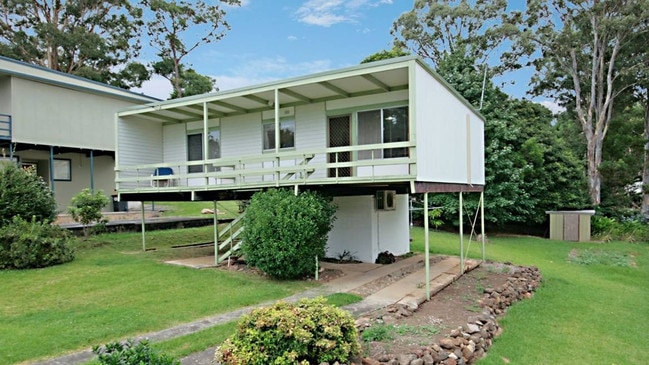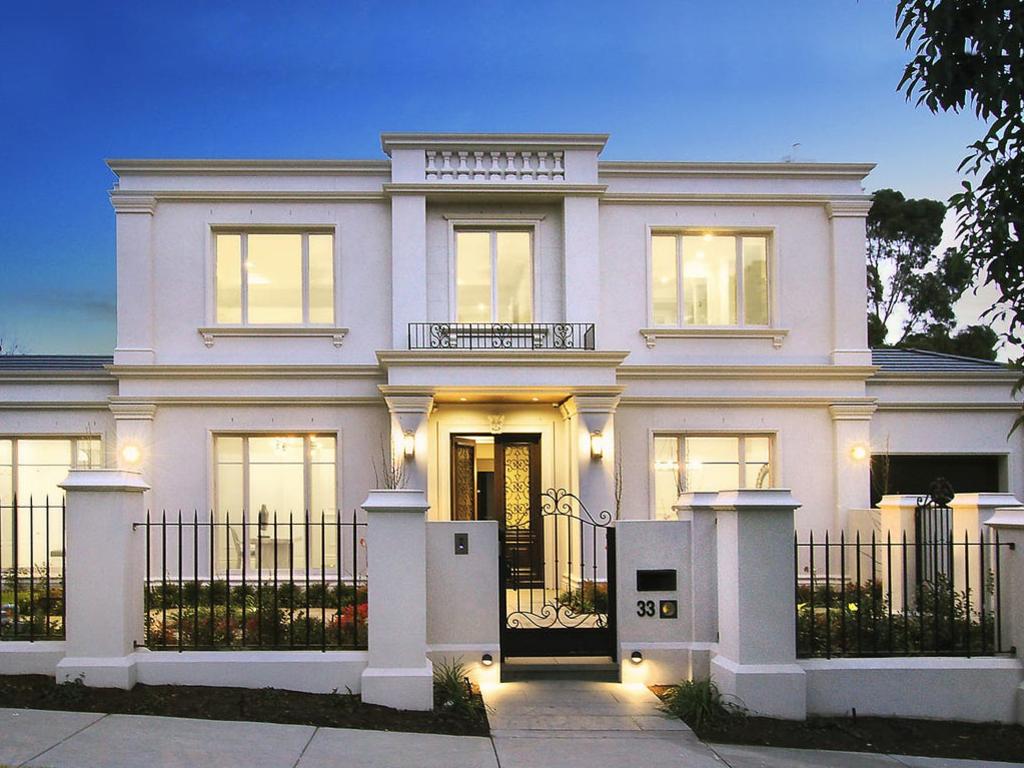Property prices in this town have risen 60pc in 12 months
As capital cities watch for signs of a potentially shorter-than-expected house price reversal, here a very different situation is unfolding.

After months of declines in the major cities, suddenly we see a lull in the housing market correction. Clearance rates are up even as volumes lift, providing a glimmer of hope ahead of the crucial spring selling season.
In the regions, it is an altogether different story, with house prices still surging despite rising interest rates.
If you’re thinking of moving to Mollymook Beach on the NSW south coast, for instance, you’re looking at paying 60 per cent more on a property now than a year ago, according to data compiled by research house PropTrack for The Weekend Australian.
According to PropTrack, 21 of the nation’s top 30 growth suburbs of the past year sit outside of the capital cities.
Those in the market, like real estate veteran John McGrath, say the worst is over for the cities.
“I think we’re close to the bottom. We’ve seen a 10-15 per cent pullback since Christmas across the metropolitan markets and it feels to me like buyers are coming back in with some confidence at these levels,” McGrath says.
“If you look at the last six corrections, they’ve lasted an average 18 months each and prices have come back about 8.5 per cent or so each time. We think we’re well beyond the 8.5 per cent correction and we think we’re about nine or 10 months into it, with the market starting to turn from November.”
It is no surprise McGrath, CEO of real estate business McGrath, sees the market as close to the bottom (he thinks there may be another 2-4 per cent drop from here), but there is evidence that could prove him right.
Clearance rates are holding up even as volumes lift ahead of the busiest selling season of the year.
Of the 1799 results collected from last weekend’s auctions, 58.8 per cent sold under the hammer, the highest clearance rate since May, according to CoreLogic. Sydney’s clearance rate of 59.1 per cent was the highest since April and came as the number of properties withdrawn fell.
Lenders are also seeing a shift in the market.
Pepper Money chief executive Mario Reyhayem says the non-bank lender, which specialises in the owner-occupier segment of the market, has seen an uptick in application volumes in recent weeks.
“What that lift in applications shows is that both the vendor and the buyer are starting to have similar expectations on the valuations of properties … vendors have adjusted their expectations so we’re seeing more of an alignment,” Reyhayem says.
“The Australian market and Australians themselves are extremely resilient. We react very quickly but the moment (the market) starts to stabilise, you see a rebound fairly quickly. This happened back in 2019 … so we might see it again.”
While metropolitan areas are enjoying a lull from the recent correction, the regional housing market continues to surge – prices are rising swiftly in desirable locations.
The South Australian market is the nation’s most robust, PropTrack director of economic research Cameron Kusher says.
“The biggest increases in South Australia are all in Adelaide, mostly in higher priced areas. The places where prices are falling are lower priced – that’s a pretty standard trend,” Kusher says.
In NSW, meanwhile, four of the top five growth suburbs were outside Sydney. Prices in King Creek on the Mid North Coast and in Mollymook Beach rose by 59 per cent in the 12 months to July, compared to the same period a year earlier. Prices rose in Mulwala, Gables and North Avoca by 57 per cent, helped by new projects.
Mollymook prices have jumped as young professionals from Canberra and Sydney relocated to the town, says McGrath Mollymook agent Andrea Tucker.
She says the oceanfront streets of Bannister Head Rd and Mitchell Pde are the premium streets in the township, which sports two golf courses. “The prices have gone up predominantly because of Covid, driven by the lockdowns,” says Tucker, who is marketing a single-level house with a $4.5m-$4.8m price tag.
This compares with national price falls primarily restricted to wealthy inner-city neighbourhoods. Vaucluse – consistently the nation’s richest suburb – in Sydney’s east recorded price falls of 19 per cent in the 12 months to July. The median sale price of a home in Vaucluse is still $3.6m. Prices also fell in Centennial Park, Waverley, Hurlstone Park and Gordon, by 20-26 per cent.
Despite the double-digit declines, affordability is still an issue for most people, according to AMP chief economist Shane Oliver. “Those glamorised parts of the country are reflective of the boom,” Oliver says.
“Affordability for the average person is still extremely difficult, and the falls we’ve seen so far aren’t going to help.”
In Victoria, all five growth suburbs of the past year were outside Melbourne. The region near the town of Bright recorded the largest growth, with prices rising by 56 per cent in the year to July.
In the city, prices fell by as much as 19 per cent in Flemington, McKinnon, Essendon North and West Melbourne – all in the capital – and in Newington, Ballarat.
The Melbourne market is the most likely to return to pre-pandemic levels, says Kusher. “Nationally, prices would have to fall about 25 per cent to get below pre-pandemic levels,” he says “Our expectation is that nationally we’ll see prices fall by up to 15 per cent.”
Regional Queensland made up all five of the state’s growth suburbs, with Woodgate, Bokarina, Charleville, Yandina and Agnes Water recording price rises of between 51 per cent and 58 per cent.
Three of the state’s lowest-performing suburbs were in Brisbane, with prices falling in St Lucia, Wooloowin and Newmarket.
The same was true for Western Australia, where prices rose in Rangeway, Beachlands, Glendalough, Ascot and Withers by between 35 per cent and 51 per cent. Prices fell by up to 20 per cent in the Perth suburbs of West Leederville, Woodlands, Joondanna and East Cannington.
While the regions have boomed over the past year, it could be a reflection of a delayed response to the housing market shift with a reversal only a matter of time, cautions Digital Finance Analytics director Martin North.
“I think it’s beginning to turn now, in the regions,” North says.
“It’s not like in some of the suburban areas in the cities where they’ve lost all of the gains since Covid. (Regions) are still up but my expectation is we will start to see falls in those areas now.
“How far they’ll fall is hard to know because there’s still quite a lot of demand in the regions. But certainly the risk that I see is that the majority of the gains that were created over that two-year period could be temporary, and we could actually come back to more sort of fundamental levels.”
Additional reporting: Chloe Whelan







To join the conversation, please log in. Don't have an account? Register
Join the conversation, you are commenting as Logout